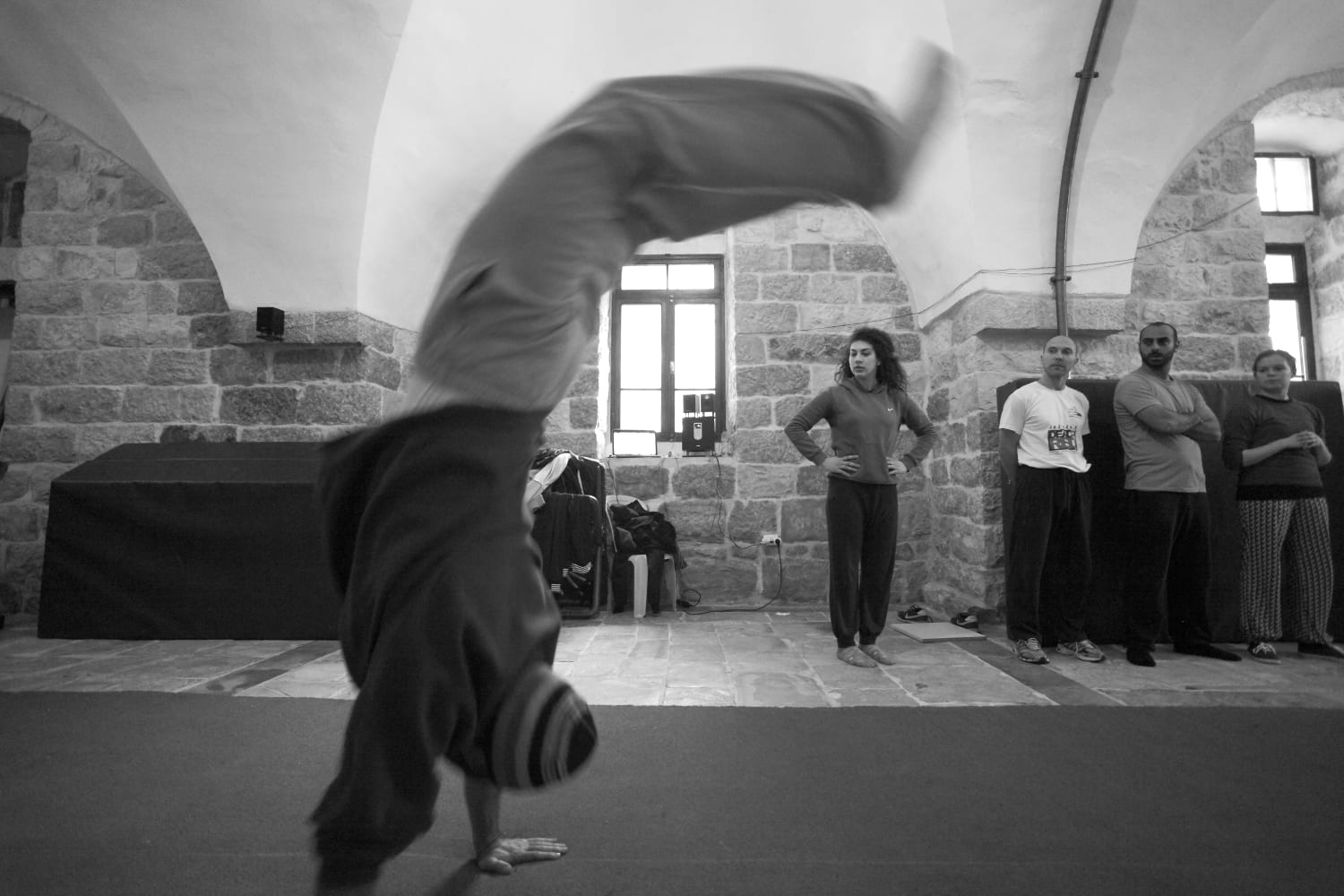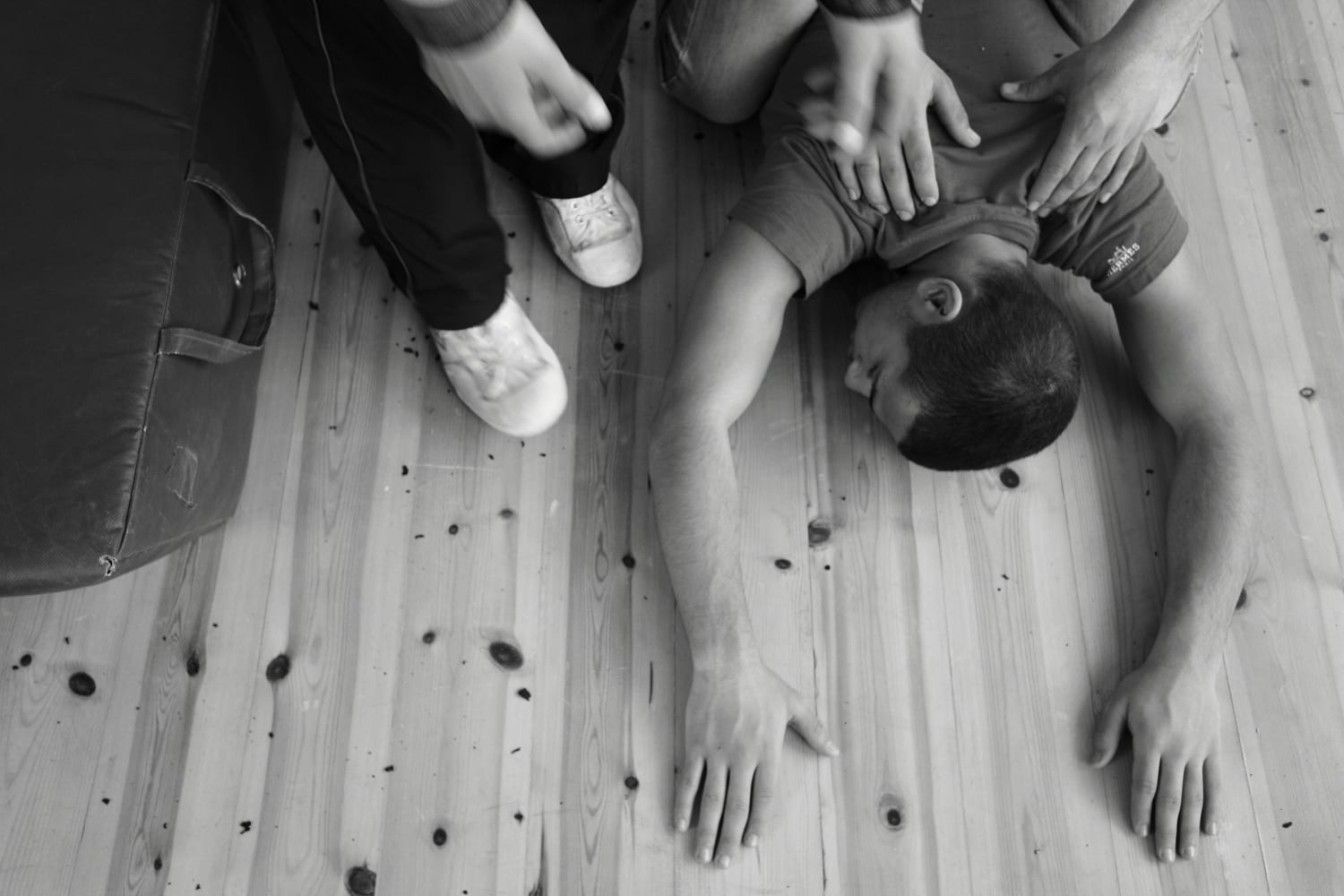You have written several books about Palestine including “Behind the Wall” (published in 2010) which shares the stories of Palestinian refugees and is accompanied by intimate portraits of those you spoke to. Does writing/storytelling and photography always go hand-in-hand for you?
I don’t feel that photography and writing need always be used together although sometimes it works. Its all been part of the development of my practice and my experimentation with different mediums. This has included photography, writing, film-making and even collaborations with dance troupes. The thread which ties everything together is creating a platform from which people can tell their own stories.

In my more recent work I am finding myself getting back to image making with little or sometimes no text at all. This is leaving more space for the viewer to think independently.
My solo show at London’s p21 Gallery last summer included a film installation through which 9 interviews with displaced Palestinians were projected simultaneously. All interviews were in Arabic with English subtitles. The initial confusion this audio-visual ‘wall’ created left the viewer with 2 choices – either walk away because you don’t understand; or really spend time focusing on different bits of film and join the dots together. I am attempting to question our levels of responsibility to each other with such work – are we willing to spend the necessary time listening to people to understand their own stories or would we rather remain blind and deaf?
What other long-term projects are you working on?
My long term body of work explores Palestinian complexities of ‘home’ and ‘identity’. Within this wider context there are various projects, which examine these issues in different ways.
Home and Exile looks at the Palestinian ‘experience’ of displacement. Part of this work was produced in partnership with BADIL Resource Center, a Palestinian NGO which specialises in refugee rights and displacement. ‘Home and Exile’ avoids the moment of high drama – the house demolition for example – instead exploring the human experience in the time before or after, or maybe the space left behind.
Workers explores the Palestinian context of a traditional documentary subject. Rather than exploring the mass of workers that Salgados incredible work focussed on, this looks closer at individuals whether workers in threatened traditional industries, shopkeepers at risk of eviction, or people trying to reach their workplace via Israeli checkpoints. Recently, a Palestinian worker told me; “If a man has work he can live, he can provide for his family. Without work we have nothing, no future.” These words encapsulate this project much better than mine ever will.
Turning the Clock Forward explores the ‘return’ of two displaced Palestinian communities inside today’s state of Israel to the villages from which they were displaced in 1948. In recent years the displaced communities of Kufr Bir’im and Iqrit implemented their own ‘return’ pro-actively by establishing tented camps in their villages. The state has demolished their camps on various occasions and launched a case in the Israeli Supreme Court for eviction. This project questions what ‘decolonisation’ may mean in today’s world.
I am also developing Bubble, which examines the Palestinian Authority’s attempts at ‘state building’ whilst under occupation in the PA stronghold of Ramallah – the ‘Bubble’. This political development, demanded by the ‘international community’, can only be implemented in the tiny dislocated areas of the West Bank under PA control.
Construction and institution-building are taking shape yet living costs are rising out of control, debt is growing rapidly amongst the majority and grassroots political activism is restrained by Israel-PA ‘security coordination’ policies – are these really steps towards ‘freedom’ or rather new layers of control that are being established?

Who are your photographic heroes?
Heroes is not a word I use lightly, but amongst the photographers who I admire most are people like Don McCullin and Sebastio Salgado, for their combination of aesthetics and sheer dedication and humanity. McCullin’s work in particular was a strong driving force behind my early work and directions I took.
I don’t get enough opportunity to see exhibitions these days, but one that affected me a lot was Simon Norfolk’s Chronotopia series. Simon Norfolk’s work is very different to the more traditional black and white documentary work I admire, and it encourages me to consider different ways of thinking about issues. I have followed his work closely ever since and seeing my name alongside his on the World Photography Awards shortlist was particularly poignant as I thought back to the effect Chronotopia had on me when I first saw it.
Find more of Rich’s work here.
First published on worldphoto.org
Be the next winner, enter the 2016 Sony World Photography Awards for free today.


